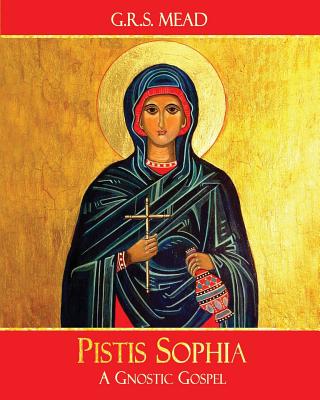Pistis Sophia: A Gnostic Gospel

Pistis Sophia: A Gnostic Gospel
This paperback edition of the Pistis Sophia is a complete and accurate reprint of the original translation by G.R.S. Mead in 1921. It contains all of Mead's original notes and running commentary, as well as his annotated bibliography which includes numerous sources and further research material for the reader. The Pistis Sophia is a gnostic text thought to have been written sometime between the 3rd and 4th centuries AD. According to Mead, there were two codices discovered in the late 18th century that contained the original work. The Bruce Codex was brought to Oxford by the famous Scottish traveler Bruce in 1769, and the Askew Codex was given to the British Museum by the heirs of a wealthy doctor in 1785. Both codices were thereafter translated by experts and their contents ordered in a fashion that seemed proper according to their best abilities. Mead's translation followed these efforts, but as he says in his introduction, the order of the contents was changed "to place the contents of these Coptic translations roughly in such a sequence that the reader may be led from lower to higher grades of the Gnosis." The Pistis Sophia itself is of such a marvelous and complex nature, that it is hard to describe in a short space. But generally, the book shows the risen Jesus revealing the lower and higher mysteries to a group of his followers over the period of 22 years. Included in these mysteries are complex cosmologies that the human soul must travel through in order to reach Gnosis with the Father. A new story of the rise and fall of a restorative figure known as the Pistis Sophia is also given by Christ. The text in the first three of the four books is a dialogue between Jesus and his disciples, including Mary Magdalene, who is the most active in the discussion. Other disciples involved include John the Virgin, Andrew, Bartholomew, James, John, Mary, Martha, Mathew, Philip, Salome, Simon the Canaanite, and Thomas. It is apparent, based on the character of the text, that the work was a compilation of various earlier editions, as some subjects and events are covered multiple times with slight variations. Changes in certain words used in describing the same ideas also illustrate that the collected works were from different time periods. The first book details how Jesus, after his resurrection, stayed with his disciples for eleven years teaching the lowest of the mysteries. An intricate cosmology is introduced through the details of Jesus ascending the so call
PRP: 99.90 Lei
Acesta este Pretul Recomandat de Producator. Pretul de vanzare al produsului este afisat mai jos.
89.91Lei
89.91Lei
99.90 LeiLivrare in 2-4 saptamani
Descrierea produsului
This paperback edition of the Pistis Sophia is a complete and accurate reprint of the original translation by G.R.S. Mead in 1921. It contains all of Mead's original notes and running commentary, as well as his annotated bibliography which includes numerous sources and further research material for the reader. The Pistis Sophia is a gnostic text thought to have been written sometime between the 3rd and 4th centuries AD. According to Mead, there were two codices discovered in the late 18th century that contained the original work. The Bruce Codex was brought to Oxford by the famous Scottish traveler Bruce in 1769, and the Askew Codex was given to the British Museum by the heirs of a wealthy doctor in 1785. Both codices were thereafter translated by experts and their contents ordered in a fashion that seemed proper according to their best abilities. Mead's translation followed these efforts, but as he says in his introduction, the order of the contents was changed "to place the contents of these Coptic translations roughly in such a sequence that the reader may be led from lower to higher grades of the Gnosis." The Pistis Sophia itself is of such a marvelous and complex nature, that it is hard to describe in a short space. But generally, the book shows the risen Jesus revealing the lower and higher mysteries to a group of his followers over the period of 22 years. Included in these mysteries are complex cosmologies that the human soul must travel through in order to reach Gnosis with the Father. A new story of the rise and fall of a restorative figure known as the Pistis Sophia is also given by Christ. The text in the first three of the four books is a dialogue between Jesus and his disciples, including Mary Magdalene, who is the most active in the discussion. Other disciples involved include John the Virgin, Andrew, Bartholomew, James, John, Mary, Martha, Mathew, Philip, Salome, Simon the Canaanite, and Thomas. It is apparent, based on the character of the text, that the work was a compilation of various earlier editions, as some subjects and events are covered multiple times with slight variations. Changes in certain words used in describing the same ideas also illustrate that the collected works were from different time periods. The first book details how Jesus, after his resurrection, stayed with his disciples for eleven years teaching the lowest of the mysteries. An intricate cosmology is introduced through the details of Jesus ascending the so call
Detaliile produsului








